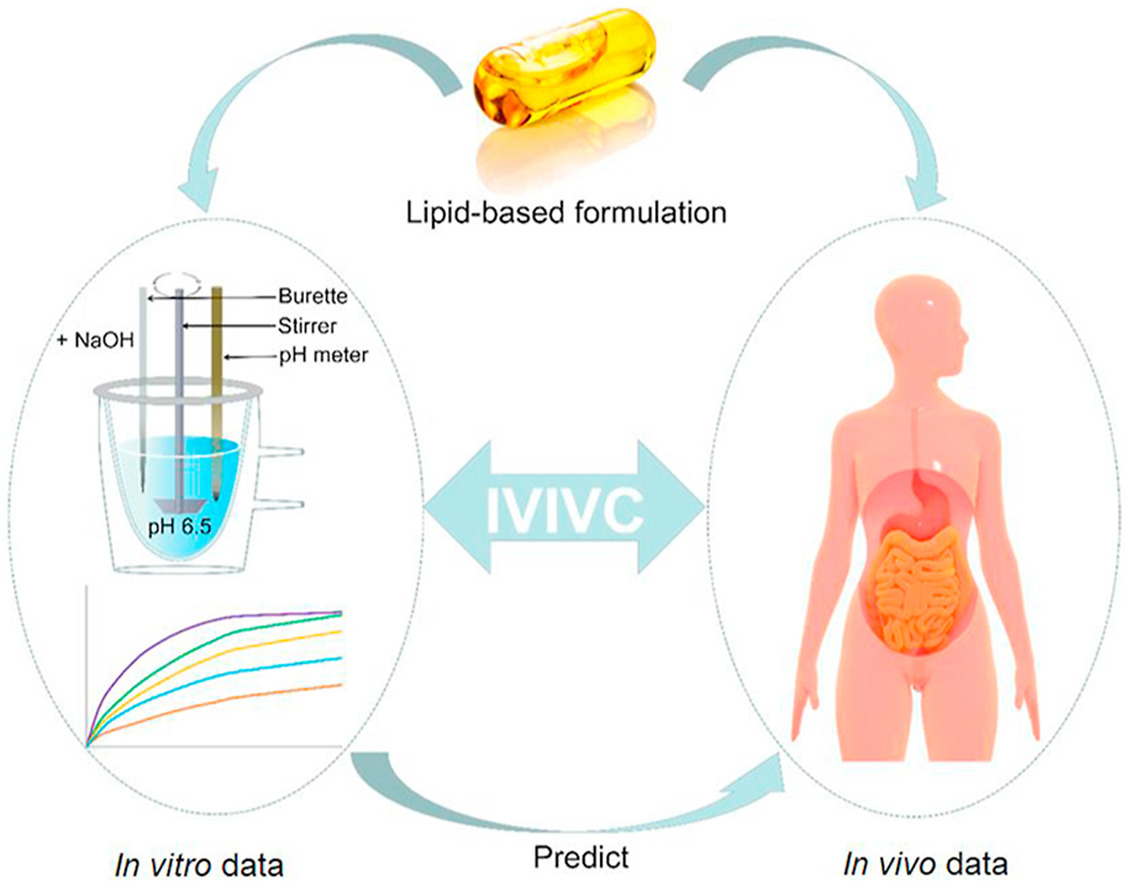In vitro and in vivo correlation for lipid-based formulations: Current status and future perspectives

Lipid-based formulations (LBFs) have demonstrated a great potential in enhancing the oral absorption of poorly water-soluble drugs. However, construction of in vitroand in vivo correlations (IVIVCs) for LBFs is quite challenging, owing to a complex in vivo processing of these formulations. In this paper, we start with a brief introduction on the gastrointestinal digestion of lipid/LBFs and its relation to enhanced oral drug absorption; based on the concept of IVIVCs, the current status of in vitro models to establish IVIVCs for LBFs is reviewed, while future perspectives in this field are discussed. In vitro tests, which facilitate the understanding and prediction of the in vivo performance of solid dosage forms, frequently fail to mimic the in vivo processing of LBFs, leading to inconsistent results. In vitro digestion models, which more closely simulate gastrointestinal physiology, are a more promising option. Despite some successes in IVIVC modeling, the accuracy and consistency of these models are yet to be validated, particularly for human data. A reliable IVIVC model can not only reduce the risk, time, and cost of formulation development but can also contribute to the formulation design and optimization, thus promoting the clinical translation of LBFs.
Access the full article Yanping Huang, Qin Yu, Zhongjian Chen, Wei Wu, Quangang Zhu, Yi Lu,
In vitro and in vivo correlation for lipid-based formulations: Current status and future perspectives,
Acta Pharmaceutica Sinica B, 2021, ISSN 2211-3835,https://doi.org/10.1016/j.apsb.2021.03.025.
(https://www.sciencedirect.com/science/article/pii/S2211383521000976)
Conclusions
The feasibility of LBF use in oral drug delivery has been fully recognized by both academia and industry. Construction of IVIVCs is a prioritized research which provides a powerful tool to promote the development of LBFs. A variety of in vitro models have been developed to understand and predict the in vivo performance of LBFs. However, none of the present models are able to mimic fully the overall processes of LBFs occurring in vivo, leading to frequent failure in obtaining level A IVIVCs. Great efforts have been made to improve the predictive power of in vitro models by closely simulating the gastrointestinal physiology. A substantial improvement in this field will definitely promote the clinical translation of LBFs.

